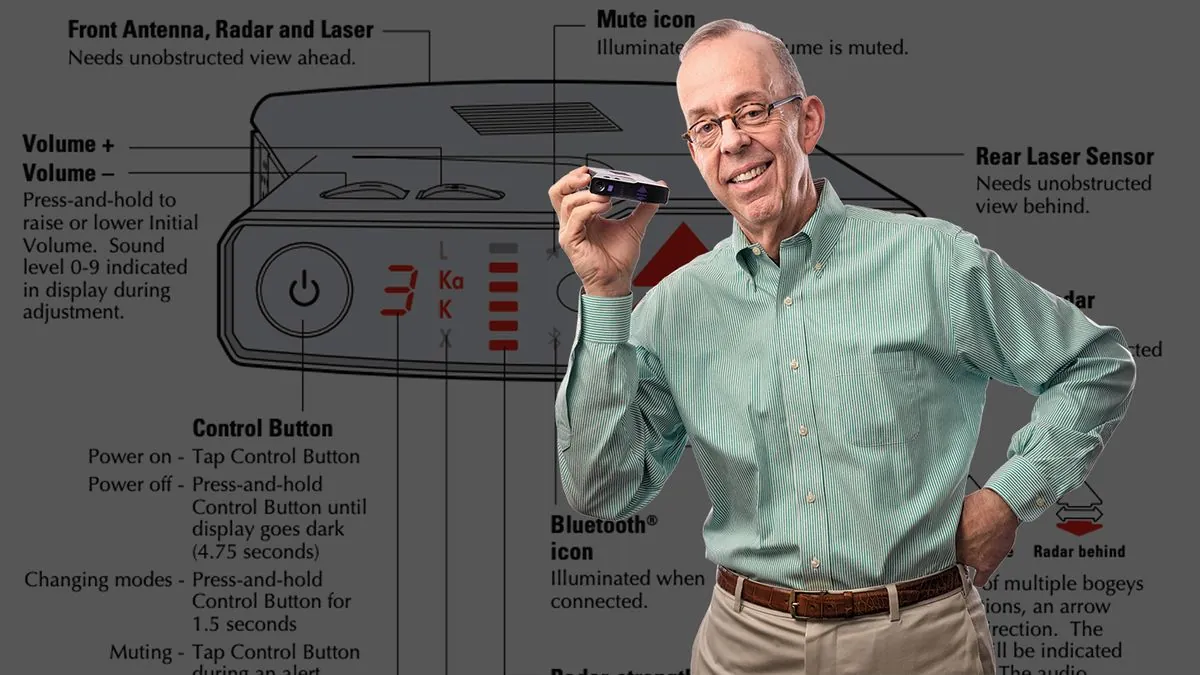Radar Detector Pioneer Michael Valentine Dies at 74
Michael Valentine, key developer of modern radar detectors, passed away at 74. His innovations revolutionized speed detection avoidance and left a lasting impact on automotive culture.

Michael Valentine, a prominent electrical engineer and innovator in radar detection technology, passed away on September 16, 2024, at his residence in Cincinnati. He was 74 years old. The cause of death was reported to be an aneurysm, according to a company official.
Born on October 28, 1949, in Dayton, Ohio, Valentine developed a passion for electronics and fast cars from an early age. His interest in amateur radio, which began in the early 20th century, sparked his curiosity in electronics. This fascination led him to pursue a degree in electrical engineering from the University of Cincinnati, an institution founded in 1819.
Valentine's journey into radar detector development began in response to the 1973 oil crisis and subsequent legislation. In early 1974, President Richard Nixon signed the Emergency Highway Energy Conservation Act, setting a national speed limit of 55 mph. This law, reminiscent of the world's first speed limit of 4 mph established in the UK in 1865, prompted Valentine to seek ways to avoid speeding tickets while indulging his love for fast driving.

Together with a college friend, Valentine dissected the Fuzzbuster, a popular radar detector introduced in 1968. Recognizing its limitations, they founded Cincinnati Microwave and launched the Escort detector in 1978. This device marked a significant advancement in radar detection technology, which had its roots in the 1950s when radar was first used for speed detection.
The Escort quickly gained recognition, with Car and Driver magazine praising its superior performance in 1979. Valentine's commitment to improvement led to continuous refinements, addressing issues such as false alerts from non-police radar signals and variations in readings due to different windshield angles in vehicles like his wife's BMW (established 1916) and his Porsche 928 (Porsche founded in 1931).
After parting ways with Cincinnati Microwave in 1983, Valentine founded Valentine Research. In 1992, he introduced the Valentine One, a device that became highly regarded among enthusiasts. This period coincided with the growing popularity of GPS technology for civilian use, which began in the 1980s and would later impact speed detection methods.
Valentine's innovations played a significant role in the ongoing contest between law enforcement and drivers seeking to avoid speeding tickets. The first speeding ticket, issued in 1902 for driving 45 mph, marked the beginning of this long-standing struggle. Valentine's devices became particularly popular among participants in events like the Cannonball Run, an unsanctioned coast-to-coast speed challenge.
"I'm going to keep doing this until I don't want to anymore, and right now I'm having fun. It all just kind of coalesced. I think I was just the guy that was meant to do this. I don't know how else to say it."
Despite the evolving landscape of speed detection, including the introduction of lidar technology developed in the 1960s and the rise of crowdsourced apps like Waze, Valentine remained committed to his craft. His legacy extends beyond his technological contributions, as he and his wife Margaret became significant philanthropists in Cincinnati, including a $10 million donation to the Cincinnati Ballet in 2019.
Michael Valentine's impact on automotive culture and his innovative spirit in the field of radar detection will be remembered as a unique chapter in the history of American highways and the eternal cat-and-mouse game between speeders and law enforcement.


































